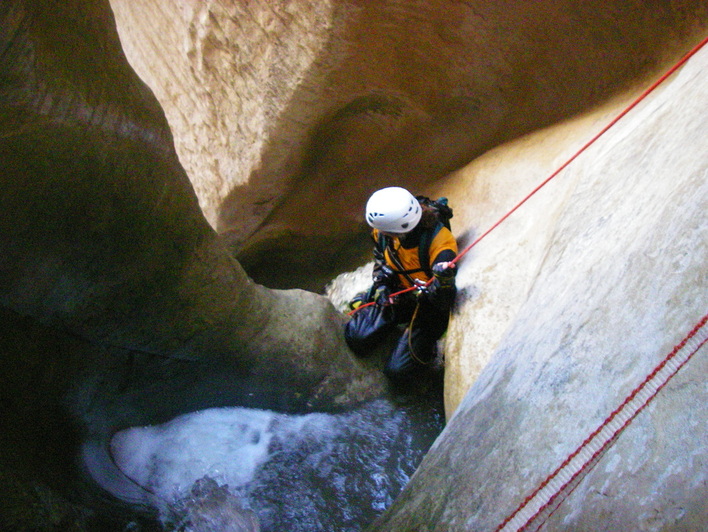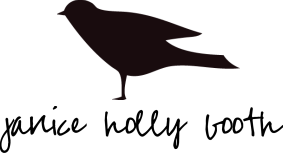|
You can become braver with this one little secret  A true HOLY SH*T moment -- a 300-foot rappel through a waterfall. It literally brought me to my knees (photo courtesy Janice Holly Booth) A true HOLY SH*T moment -- a 300-foot rappel through a waterfall. It literally brought me to my knees (photo courtesy Janice Holly Booth) When you’re standing on the edge of a cliff, holding on to a rope the size of a fettucine noodle, you don’t think about much except staying alive. That’s how I felt rappelling into the slot canyons of Utah, thoroughly out of my element and completely terrified. I spent three days in a canyoneering training school -- learning the ropes so to speak -- and there wasn’t a moment when I didn’t feel nauseous, or weak, or mad, or tearful. But looking back on what I had done – all the incredibly scary rappels and climbs and near-falls – I had an epiphany. One of the most important of my life. Here it is. Fear and discomfort are two different things, but they often masquerade as the same. It’s true. As a society we have become so discomfort averse that we simply can’t tolerate feeling anxious about anything. The minute we attempt something outside of the place where we’re comfortable and we start to feel the rapid pulse, the shaking hands, the shortness of breath, we say “Oh, I’m too afraid, I can’t do this thing.” What we’re really saying is, “I’m choosing not to do this because I don’t like the way it feels.” And that’s exactly what had happened to me in the canyons. In retrospect, over the course of three days, I was genuinely terrified only two times. All the other high drama was just due to extreme discomfort but I didn’t know it then. Because I felt so out of my element, I assumed I was afraid. So, here's the real question: How do you tell the difference between fear and discomfort? Answer: Real fear is disabling. It’s crippling. And yes, it’s primal. Are you walking, talking, thinking? Then you're not afraid, you're just in that awful state of anxiousness that's trying to shut you down. Fear is a response designed to take you over, but it is not rational. It doesn't have access to all the information you do. In the canyons, my rational brain knew I had ropes, a harness and a guide. I was pretty safe. But my primal brain sounded the alarm nonstop. And if I'd given in, I would have missed out on one of the most transformational and exquisite experiences I've ever had. Don't let fear -- or the feeling of fear -- rob you from realizing your potential. Got the jitters? Here are 3 steps to get you through them. 1. Assess the situation. Is the risk real (i.e., could I die if do this?) or perceived (will I only feel like dying if I do this thing but in reality I’m pretty safe?). 2. Discern. If the risk is a merely perceived one, then overcoming it becomes a test of will, of courage, of moxie. Remember, it only takes one step (one mother of a step, mind you, but just one nonetheless) to bring courage forward and send fear into retreat. 3. Debrief: How did you feel in the worst of it? The best of it? What held you back and what moved you forward? This information will help you understand how you took action despite the fear that tried to hold you back. Call upon this knowledge the next time fear tries to stop you. No matter what anyone tells you or what you want to believe, know this: everybody fears. Being fearful doesn’t make you a coward, it makes you human. Finding the inner resources to stand up to fear and navigate around it makes you a noteworthy human. Willingly embracing discomfort in order to grow makes you exceptional. Try it. The secret to courage is repetition of the risk. People are not born brave; they become brave. What's the bravest thing you've ever done...or would like to do?
2 Comments
Leave a Reply. |
AuthorI've never been accused of not having an opinion. Even if you don't agree, hopefully you will enjoy! Archives
April 2020
Categories |

 RSS Feed
RSS Feed